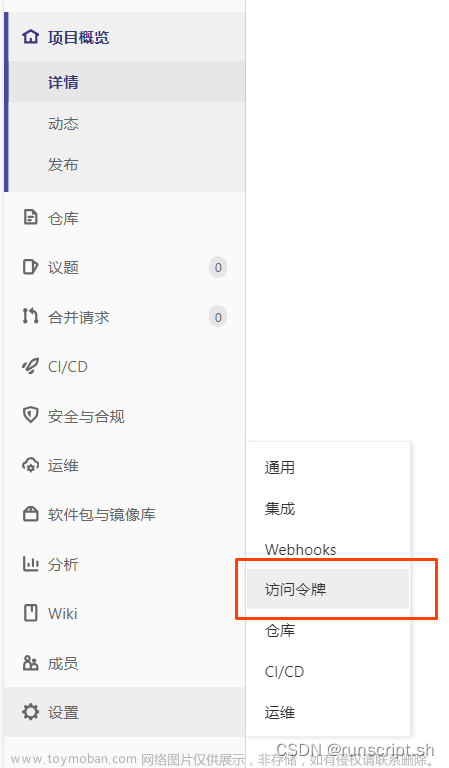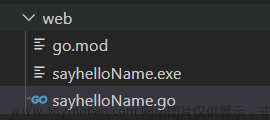go读写锁的实现原理
1、RWMutex读写锁的概念
读写锁也就是我们所使用的RWMutex,其实是对于go本身的mutex做的一个拓展,当一个goroutine获得了读锁后,其他goroutine同样可以获得读锁,但是不能获得写锁。相反,当一个goroutine获得了写锁,其他goroutine既不能读也不能写,互斥的概念。
2、使用场景
适用于读多写少的情况
3、底层实现
读写锁实现的结构体位于src下的sync包下的rwmutex.go文件中
type RWMutex struct {
w Mutex // held if there are pending writers
writerSem uint32 // semaphore for writers to wait for completing readers
readerSem uint32 // semaphore for readers to wait for completing writers
readerCount int32 // number of pending readers
readerWait int32 // number of departing readers
}
w字段代表着复用了互斥锁
writerSem代表写信号量,用于写等待读
readerSem代表读信号量,用于读等待写
readerCount代表当前执行读的goroutine数量
readerWait代表被阻塞的准备读的goroutine的数量
4、读锁的实现
加读锁
func (rw *RWMutex) RLock() {
if atomic.AddInt32(&rw.readerCount, 1) < 0 {
// A writer is pending, wait for it.
runtime_SemacquireMutex(&rw.readerSem, false, 0)
}
}
首先看这个if方法,为什么要判断小于0呢?
atomic.AddInt32(&rw.readerCount, 1) < 0调用的这个原子方法,目的就是当goroutine加读锁的时候读锁数量+1,如果返回的数量是负数,那么就代表了当前有其他写锁,这个时候就掉用runtime_SemacquireMutex方法休眠当前goroutine,readerSem就记录者这个goroutine。所以要判断是否小于0
释放读锁
// RUnlock undoes a single RLock call;
// it does not affect other simultaneous readers.
// It is a run-time error if rw is not locked for reading
// on entry to RUnlock.
func (rw *RWMutex) RUnlock() {
if r := atomic.AddInt32(&rw.readerCount, -1); r < 0 {
// Outlined slow-path to allow the fast-path to be inlined
rw.rUnlockSlow(r)
}
}
释放读锁的时候就是对readerCount读数量-1即可,如果返回值小于0,就代表着当前有写的操作,这个时候就会调用rUnlockSlow进入慢速通道
什么是慢速通道
func (rw *RWMutex) rUnlockSlow(r int32) {
// A writer is pending.
if atomic.AddInt32(&rw.readerWait, -1) == 0 {
// The last reader unblocks the writer.
runtime_Semrelease(&rw.writerSem, false, 1)
}
}
被阻塞的准备读的goroutine数量-1,如果readerWait为0,就表示当前没有goroutine正在准备读,这个时候去唤醒写操作
5、写锁的实现
加写锁
const rwmutexMaxReaders = 1 << 30
// Lock locks rw for writing.
// If the lock is already locked for reading or writing,
// Lock blocks until the lock is available.
func (rw *RWMutex) Lock() {
// First, resolve competition with other writers.
rw.w.Lock()
// Announce to readers there is a pending writer.
r := atomic.AddInt32(&rw.readerCount, -rwmutexMaxReaders) + rwmutexMaxReaders
// Wait for active readers.
if r != 0 && atomic.AddInt32(&rw.readerWait, r) != 0 {
runtime_SemacquireMutex(&rw.writerSem, false, 0)
}
}
写锁的调用就是调用互斥锁w的lock,如果计算之后还是有其他goroutine持有读锁,那么就调用runtime_SemacquireMutex休眠当前的goroutine等待所有的读操作完成, atomic.AddInt32(&rw.readerCount, -rwmutexMaxReaders) + rwmutexMaxReaders这个操作目的是防止后面的goroutine拿到读锁,阻塞读的作用。
释放写锁
// Unlock unlocks rw for writing. It is a run-time error if rw is
// not locked for writing on entry to Unlock.
//
// As with Mutexes, a locked RWMutex is not associated with a particular
// goroutine. One goroutine may RLock (Lock) a RWMutex and then
// arrange for another goroutine to RUnlock (Unlock) it.
func (rw *RWMutex) Unlock() {
// Announce to readers there is no active writer.
r := atomic.AddInt32(&rw.readerCount, rwmutexMaxReaders)
if r >= rwmutexMaxReaders {
race.Enable()
fatal("sync: Unlock of unlocked RWMutex")
}
// Unblock blocked readers, if any.
for i := 0; i < int(r); i++ {
runtime_Semrelease(&rw.readerSem, false, 0)
}
// Allow other writers to proceed.
rw.w.Unlock()
}
当释放写锁的时候,首先会通过atomic.AddInt32(&rw.readerCount, rwmutexMaxReaders)恢复之前的写入的很大的那个负数,然后看当前有多少个读操作在等待,循环唤醒等待读的goroutine
注意:go中的锁不支持可重入锁,若想实现可自定义实现文章来源:https://www.toymoban.com/news/detail-682160.html
6、总结
读写锁区分读锁和写锁,而普通的互斥锁不区分,读写锁主要应用在读多写少的场景,既保证了并发读的执行效率,又保证了线程之间的安全。文章来源地址https://www.toymoban.com/news/detail-682160.html
到了这里,关于go中读写锁(rwmutex)源码解读实现原理的文章就介绍完了。如果您还想了解更多内容,请在右上角搜索TOY模板网以前的文章或继续浏览下面的相关文章,希望大家以后多多支持TOY模板网!











